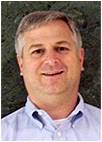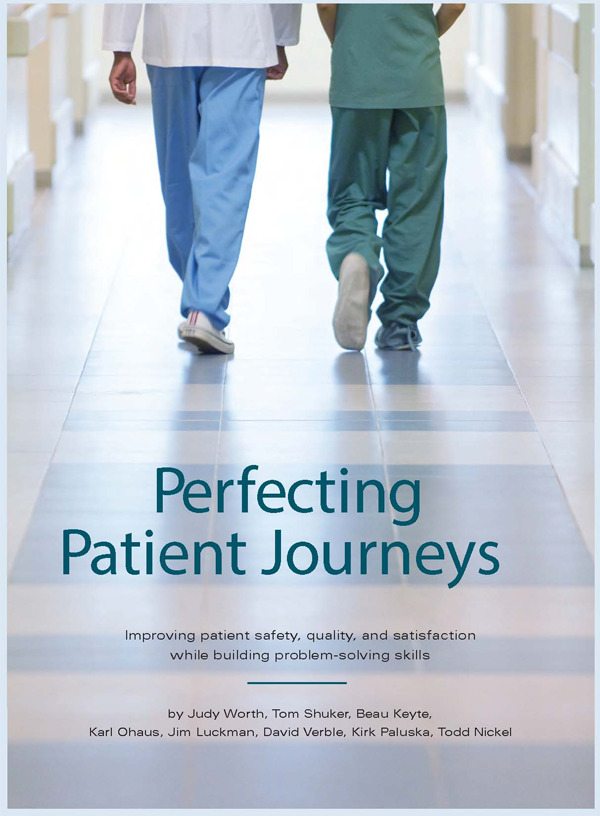In February, The Lean Enterprise Institute released its first workbook on lean thinking for healthcare organizations, Perfecting Patient Journeys. Co-authored by eight LEI faculty members and some of the best lean practitioners in the field, the workbook is specifically designed to help healthcare professionals lead their teams in more effective problem solving and cross-functional problem solving in order to serve patients better. We sat down with contributors Judy Worth and Karl Ohaus (Lean Transformation Group) to discuss the value and potential of lean thinking in healthcare today and where they have seen lean make a meaningful difference.
LEI: From what each of you have seen of lean in healthcare settings, what has been most exciting and interesting to you?
 Karl Ohaus: Many people in healthcare have chosen their profession because they have a passion for helping people. They want to see their patients and the patients’ families through the healing process. It is so exciting to see this passion, this drive applied to the process of improving the way that healthcare is delivered. At every level we find that the doctors, nurses, administrators, and staff that we have worked with quickly become advocates to continuously improve the value streams they work in. When a group of people who use the experimental method in their work learn how to apply the same thinking to improving the systems they work inside, they quickly see significant improvements.
Karl Ohaus: Many people in healthcare have chosen their profession because they have a passion for helping people. They want to see their patients and the patients’ families through the healing process. It is so exciting to see this passion, this drive applied to the process of improving the way that healthcare is delivered. At every level we find that the doctors, nurses, administrators, and staff that we have worked with quickly become advocates to continuously improve the value streams they work in. When a group of people who use the experimental method in their work learn how to apply the same thinking to improving the systems they work inside, they quickly see significant improvements.
 Judy Worth: We’ve seen lean principles applied in a way that produces results and a new level of engagement in a variety of settings: surgical supply, cardiac catheterization, medical laboratory service, radiology, emergency medicine, organ transplantation service, orthopedic surgery, clinical medicine, and primary care. We typically don’t have direct contact with patients, but we stay in touch with many healthcare team members we’ve worked with over the years. It’s gratifying to see people continue to improve the areas within which they work and continue to experience the benefits of ongoing problem solving in their units and functions. It’s also gratifying to know that people’s work lives get better as they weed out the activities that not only don’t add value but often add stress to an already overburdened workforce. And relationships with patients improve as a result of changes in quality and efficiency. We hear this again and again.
Judy Worth: We’ve seen lean principles applied in a way that produces results and a new level of engagement in a variety of settings: surgical supply, cardiac catheterization, medical laboratory service, radiology, emergency medicine, organ transplantation service, orthopedic surgery, clinical medicine, and primary care. We typically don’t have direct contact with patients, but we stay in touch with many healthcare team members we’ve worked with over the years. It’s gratifying to see people continue to improve the areas within which they work and continue to experience the benefits of ongoing problem solving in their units and functions. It’s also gratifying to know that people’s work lives get better as they weed out the activities that not only don’t add value but often add stress to an already overburdened workforce. And relationships with patients improve as a result of changes in quality and efficiency. We hear this again and again.
LEI: At last year’s Lean Transformation Summit, John Toussaint of Healthcare Value Network spoke about the potential of lean in our healthcare systems, regardless of where people stand politically. He’s seen lean thinking and practice make an incredible difference for patients and physicians/staff/teams. What are some of the differences you’ve seen?
KO: Lean is about ongoing problem solving by the people doing the work in order to deliver more value to patients using fewer resources. So many people in healthcare don’t have the time to deliver the value they want. Doctors and nurses want to spend more time with patients. This is not a political issue; this is about job satisfaction and healthcare professionals doing what they wanted to do when they choose their profession. We’ve seen value stream improvement projects help with overburden by level loading work, eliminating non value adding steps and reducing rework.
JW: We’ve seen VSI project leaders take what they’ve learned about team based problem solving and apply those skills to new challenges (e.g., implementing EHR systems and developing better data bases for healthcare informatics, taking a community emergency department to a level III trauma center to make trauma care available in the local community, implementing procedures to address anaphylaxis and cardiac emergencies in a general pediatric practice and in the process saving a toddler’s life). We’ve heard stories about workplace relationships that are transformed as people learn to solve problems with professionals from other disciplines (doctors, nurses, ancillary staff) and other departments in parallel with increased staff and patient satisfaction scores and less staff turnover.
LEI: You’ve mentioned that lean process improvement does a great deal of good when it comes to emergency/disaster relief, when hospitals and clinics need to respond quickly, with limited resources and so many more patients. Do you any examples come to mind where you’ve seen lean make a difference in first-response and recovery work?
KO: In a disaster situation the organization is facing a unique problem. In Perfecting Patient Journeys, we talk about how to structure rapid cycles of organizational learning. In a disaster this structure, and the speed of learning cycles, become a significant organizational advantage.
One example is when Lean Transformations Group and MHA Keystone Center were working with emergency rooms in Michigan. We had one ER that was flooded by a flash flood about halfway through their lean learning program. The ER team understood the basics of lean: how to design future state value streams, how to create an action plan to implement the future state, how to create fast cycles of learning, and, just as important, how to get people involved. In response to the challenges caused by the flash flood, the emergency room leadership team was quickly able to present the board of directors of the hospital an alternative plan to relocate the ER, a plan that would have minimum impact on the quality of care and disruption to the overall function of the hospital. The plan was accepted by the board and carried out with great success. The ER team let the LTG cohort know that without the skills they had learned in the first part of our program they wouldn’t have even considered the plan they came up with, much less been able to put it together and make it a reality.
LEI: What, if anything about lean principles and tools needs to be adapted in healthcare settings (versus how lean is applied in manufacturing)?
KO: There are several key characteristics of value streams. The first is how they are scheduled: value streams can run to a schedule or they can be demand-based. The second is that the work in the each value stream can be fixed or can vary. The third is that the nature of the work within each process step can be transactional or be about creating knowledge. In manufacturing, the work tends to be scheduled, fixed in content, and transactional. In healthcare, the work is typically on demand, variable, and about creating knowledge. This is one reason we wrote Perfecting Patient Journeys. The healthcare community needed a book that spoke about lean thinking and lean tools in these terms.
An important thing to remember is that no matter what the work is, it is critical for organizations to more effectively problem solve around how the work flows inside value streams. One advantage for healthcare organizations is that the people who work in healthcare are already very familiar with fast cycles of learning. They do it every day in caring for patients. Our book takes that individual skill and helps organizations apply it to their value streams and management systems in a holistic way.
LEI: Who would get the most out of reading Perfecting Patient Journeys?
JW: The book is designed for healthcare leaders who want to help team members learn to do lean problem solving by leading them through a value stream improvement effort. That effort could be confined to a specific department or unit at first, but as teams within a hospital, clinic, skilled nursing facility, hospice or other healthcare organization learn to apply this methodology, it can be used to improve value streams that go across the entire organization. Or, it can be used to improve value streams from one organization to another as patients move from a care setting out into the community and vice versa. It would be most effective if a team could get the book and work through it together.
LEI: What’s next for both of you?
KO: I’m curious about how we can engage with leadership to begin to see process improvement as part of the daily routine asopposed to special projects run by the process improvement specialists. This is central to the work I’m exploring.
JW: How do we get leaders to understand that each level of an organization has its own type of problems to solve? One of the critical roles of leadership is to help develop the problem solving capability of all team members. So this is something I’ll be working on and thinking about. We also want to help leaders understand that paying attention to process (not just results or, its polar opposite, activity) is critical if we’re going to meet the challenges facing us today as needs increase and resources shrink.





